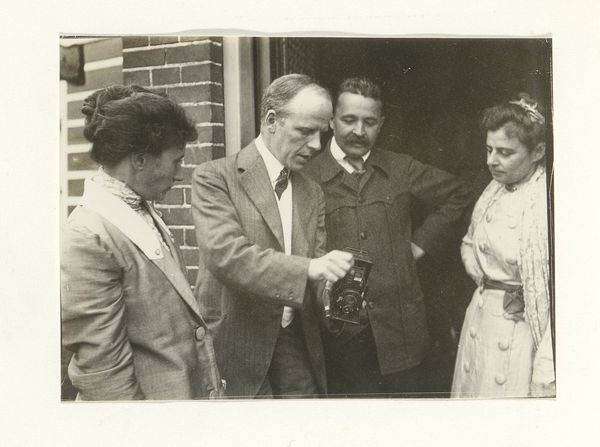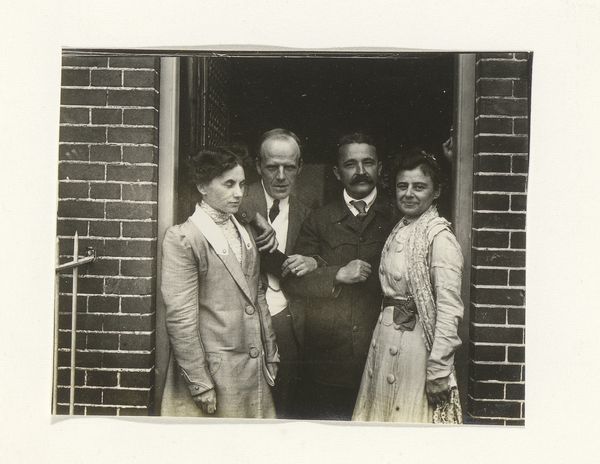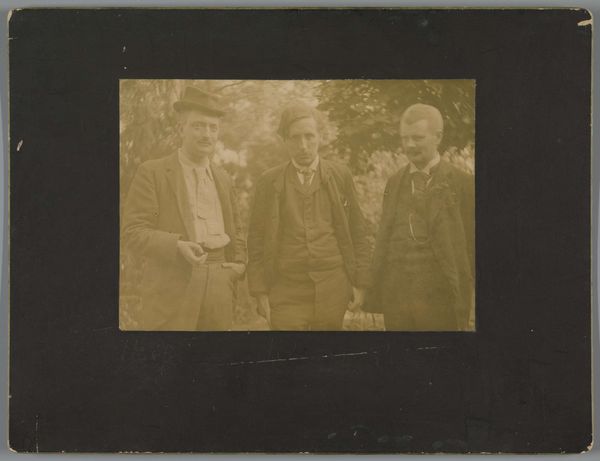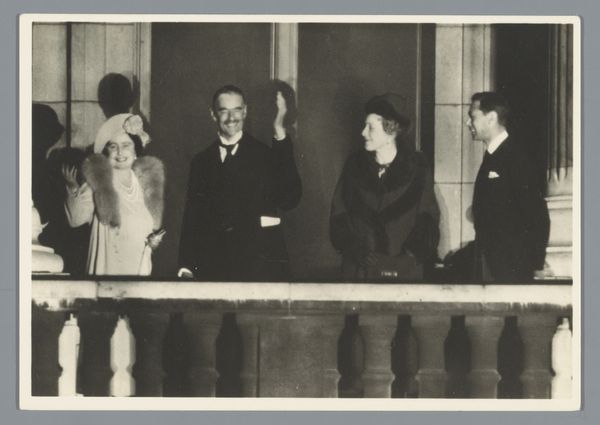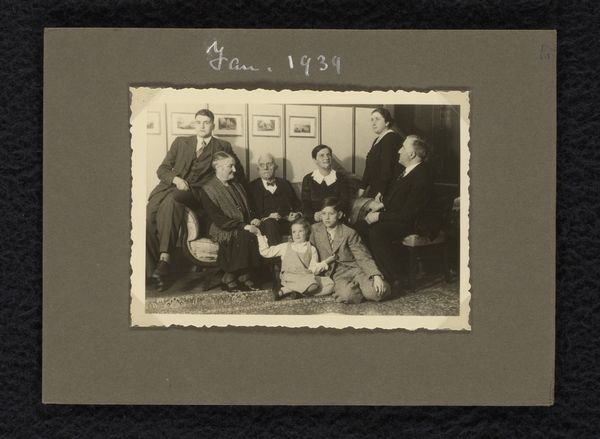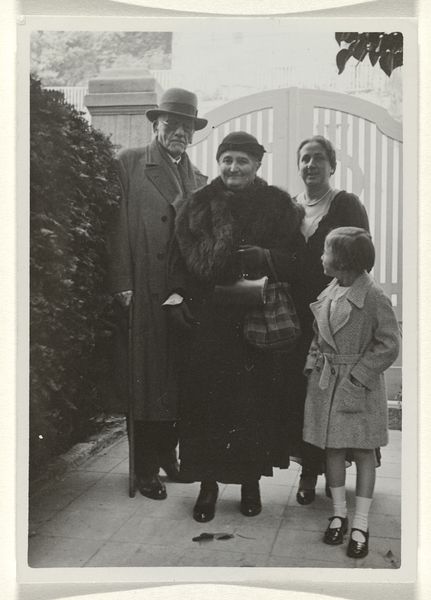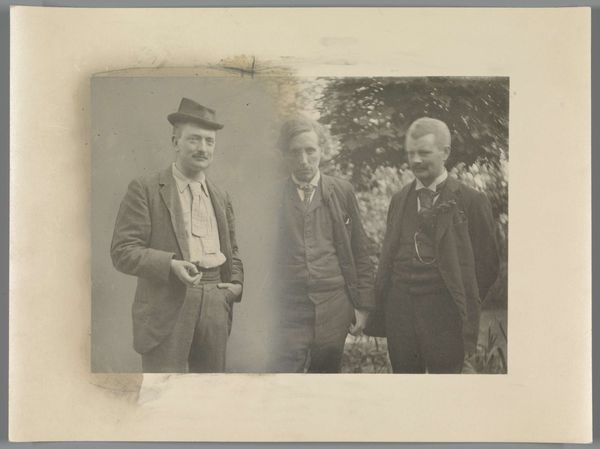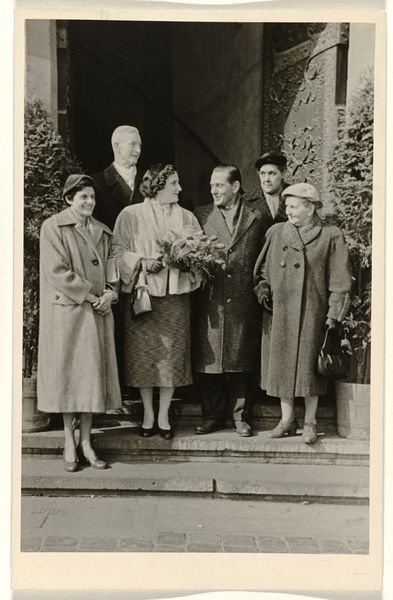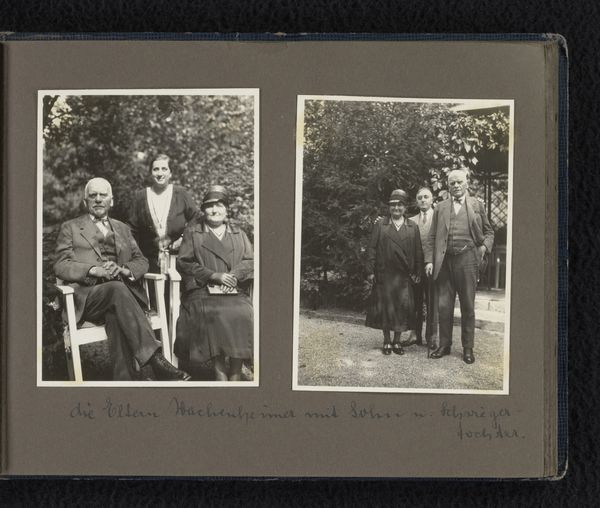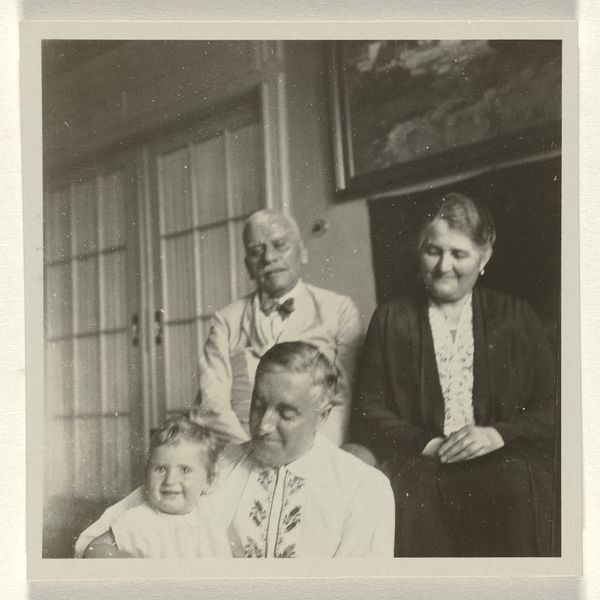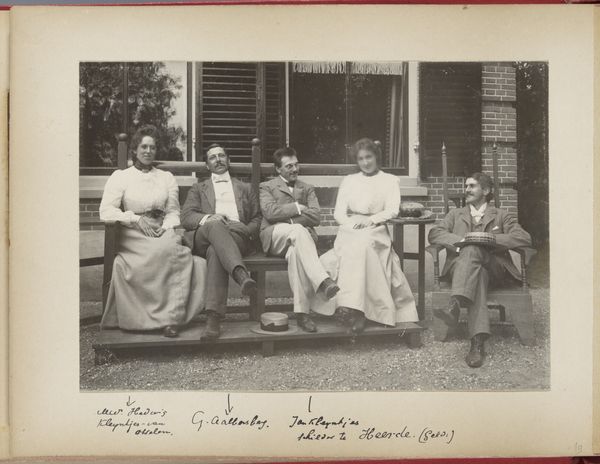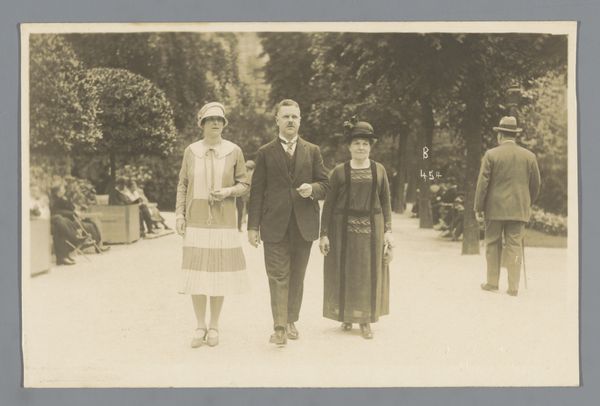
photography, gelatin-silver-print
#
portrait
#
pictorialism
#
photography
#
historical photography
#
group-portraits
#
gelatin-silver-print
#
genre-painting
#
realism
Dimensions: height 75 mm, width 100 mm
Copyright: Rijks Museum: Open Domain
Curator: This photograph, entitled "Mannen en vrouwen bij een deuropening," which roughly translates to "Men and Women at a Doorway," dates from around 1900 to 1910. It is a gelatin-silver print. Editor: It's striking, isn’t it? Very somber. They all seem so serious, especially that central figure clutching something dark in his hand—perhaps a camera or other equipment? There’s a formality here that speaks to an era. Curator: Absolutely. Thinking about it as a gelatin-silver print helps us consider the layers of labor involved. It's not just the moment captured, but the skilled darkroom work that gives it this particular tone and permanence. The process of creating and fixing this image would have been quite involved. Editor: It also raises questions about who this group is and what they represent. The photographic format was becoming more accessible then, but who commissioned it, and for what purpose? A family portrait, perhaps? The door itself looks to me as if is part of the architectural feature on a government building. What statement might that convey? Curator: It’s an interesting question, considering the emerging social function of photography in that period, that intersection of amateur and professional, public and private. And their attire, look at how it’s designed! The subtle variations and, most importantly, what the creation process entailed for people. These materials represent far more than just adornment; they embody an entire labor system, don't they? Editor: Precisely. How were such portraits circulated, displayed, and valued? Was this intended as art, documentation, or both? It appears that there were several successful, early twentieth century movements employing photography and photographic aesthetics that were invested in similar questions about form and presentation as fine art. That’s a piece that adds so many potential layers of analysis. Curator: This photograph certainly illuminates the craftsmanship and material processes that define an era, revealing the socio-economic context through which this group sought to be seen. Editor: Agreed, and by understanding that broader context we can start to unearth hidden narratives and explore the dynamic relationship between the artwork, its creators, and its audience.
Comments
No comments
Be the first to comment and join the conversation on the ultimate creative platform.
